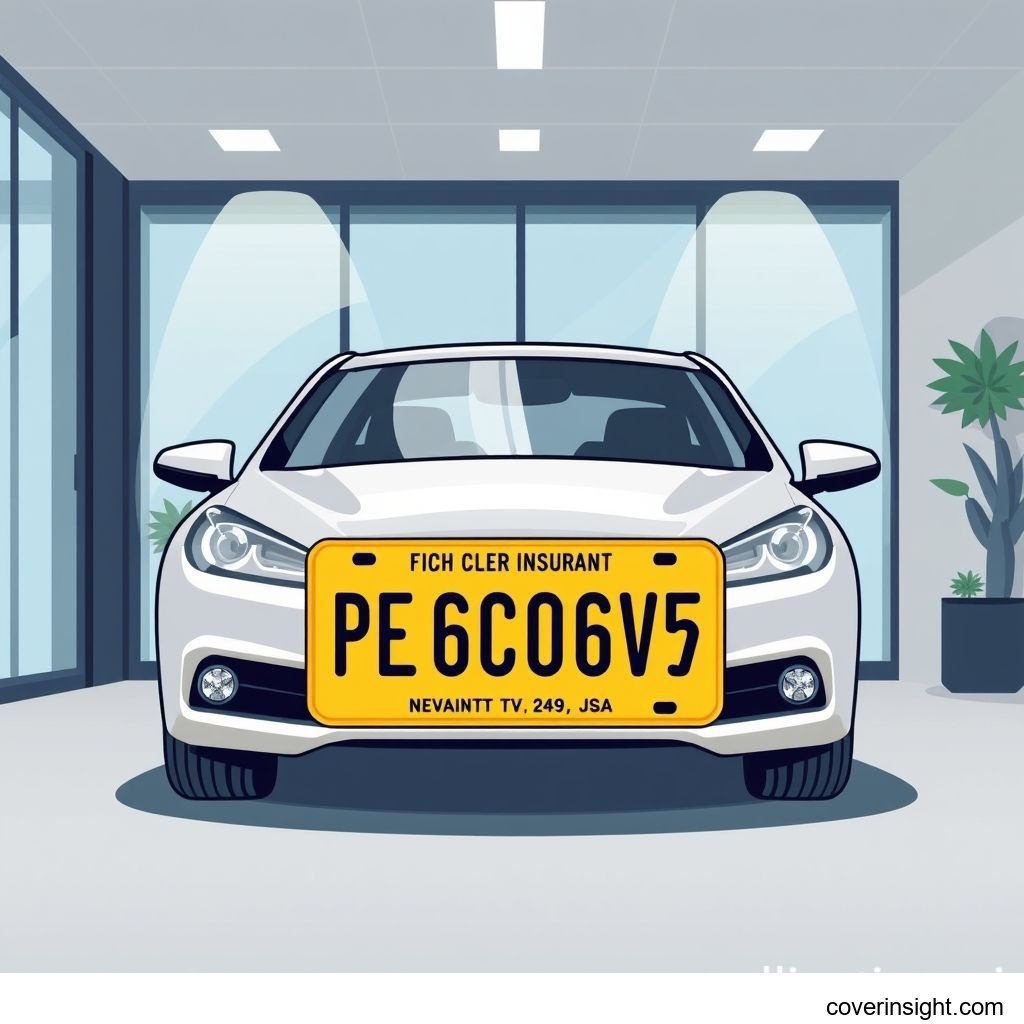Compare US Auto Insurance: Progressive, Clearcover & More 2025
Introduction
In the dynamic landscape of US auto insurance, securing the right coverage in 2025 remains a critical decision for millions of drivers. Progressive, a household name known for its innovative approach and direct-to-consumer model, continues to be a prominent player. However, the market is constantly evolving, with newer, tech-forward providers like Clearcover entering the fray, promising streamlined experiences and competitive rates. Understanding the nuances between these and other providers is paramount to ensuring you're adequately protected without breaking the bank. This guide aims to demystify the options, focusing on key aspects of coverage, cost, and how to make an informed choice for your needs.
Coverage Details
Navigating the world of auto insurance can feel like sifting through a stack of legal documents, but understanding the basics of what's included and excluded is simpler than it seems.
What’s Included
Most auto insurance policies, whether from Progressive, Clearcover, or another major insurer, offer a core set of coverages designed to protect you financially in various scenarios:
-
Liability Coverage: This is the foundation of almost every policy and is legally required in most states. It covers damages (both bodily injury and property damage) you might cause to others in an at-fault accident. Progressive offers robust liability options, allowing drivers to choose limits that suit their risk tolerance.
-
Collision Coverage: Pays for damage to your own vehicle resulting from a collision with another car or object, regardless of fault.
-
Comprehensive Coverage: Protects your vehicle from non-collision incidents such as theft, vandalism, fire, natural disasters (hail, floods), or hitting an animal.
-
Uninsured/Underinsured Motorist (UM/UIM) Coverage: An unfortunate reality is that many drivers on the road lack sufficient insurance. UM/UIM protects you if you're hit by a driver who has no insurance or not enough to cover your damages and medical bills.
-
Medical Payments (MedPay) / Personal Injury Protection (PIP): These cover medical expenses for you and your passengers after an accident, regardless of who was at fault. PIP, particularly common in "no-fault" states, can also cover lost wages and essential services. While your primary health insurance might kick in for major medical bills, MedPay/PIP can often cover initial costs and co-pays, supplementing your care. For those exploring broader health coverage options, resources like [Healthcare.gov] provide a good starting point to understand your overall health insurance landscape.
-
Roadside Assistance & Rental Car Reimbursement: Many providers offer these as optional add-ons for extra peace of mind.
Progressive typically offers all these standard coverages, alongside unique add-ons like "Loan/Lease Payoff" (gap insurance) and "Custom Parts and Equipment" coverage. Clearcover, while newer, also provides these core coverages through a streamlined digital platform, emphasizing quick claims processing and a user-friendly experience.
Common Exclusions
While policies are designed to protect, there are situations where coverage won't apply:
-
Intentional Damage: Causing damage to your vehicle or another's intentionally is never covered.
-
Racing or Illegal Activities: If an accident occurs while you're participating in a race or committing a crime, your policy will likely be void.
-
Unlisted Drivers: If someone who isn't listed on your policy (and isn't a permissive user like a household member) drives your car and gets into an accident, coverage might be denied or limited.
-
Commercial Use: Using a personal vehicle for business purposes (e.g., ridesharing, delivery services) without a specific commercial policy or endorsement will generally lead to denial of claims. This is particularly relevant for those in the contractor field. For instance, understanding specific policies through guides like [Texas Contractor Insurance: BOP & Progressive Guide 2025] can be crucial if you operate vehicles for your business.
-
Lack of Maintenance: Damages resulting from negligence or a lack of basic vehicle maintenance are typically excluded.
Cost Analysis
Auto insurance premiums are highly individualized, but understanding the factors that influence them and tips for saving money can make a significant difference.
Price Factors
Several key elements contribute to how much you pay for auto insurance:
-
Driving Record: This is arguably the biggest factor. A clean record with no accidents or moving violations will earn you the best rates. A history of tickets or accidents, however, will push your premiums north.
-
Age and Experience: Younger, less experienced drivers (especially teenagers) typically pay more due to higher perceived risk. Rates often decrease as drivers mature and gain experience.
-
Vehicle Type: The make, model, year, and even color of your car can impact rates. More expensive cars, sports cars, or vehicles with higher theft rates often cost more to insure.
-
Location: Where you live and park your car plays a huge role. Urban areas with higher traffic density, theft rates, and accident statistics generally have higher premiums than rural areas. For example, according to data from the [National Association of Insurance Commissioners] (NAIC), average auto insurance expenditures in the U.S. have consistently shown variations by state, with densely populated states often seeing higher rates.
-
Credit Score: In most states, insurers use a credit-based insurance score as a predictor of risk. Generally, a higher credit score can lead to lower premiums.
-
Coverage Limits and Deductibles: Choosing higher liability limits or lower deductibles (the amount you pay out-of-pocket before insurance kicks in) will result in higher premiums, as the insurer is taking on more risk.
-
Marital Status: Married individuals often receive lower rates, as statistics suggest they are less likely to file claims.
Saving Tips
Even with all these factors, there are numerous ways to trim down your auto insurance bill:
-
Bundle Policies: One of the easiest ways to save is to combine your auto insurance with other policies, such as home or renters insurance, with the same provider. Progressive, for example, is well-known for offering significant bundling discounts. This concept extends to commercial needs too; understanding [Texas Business Insurance 2025: Progressive & State Farm Guide] can show how bundling applies beyond personal lines.
-
Maintain a Good Driving Record: As simple as it sounds, avoiding accidents and tickets is the most effective long-term strategy for lower premiums.
-
Take Advantage of Discounts: Ask about discounts for good students, military personnel, low mileage, anti-theft devices, or paying your premium in full. Both Progressive and Clearcover offer various discounts. Progressive, for instance, has its Snapshot program that monitors driving habits, potentially rewarding safe drivers with lower rates.
-
Increase Your Deductible: If you can comfortably afford to pay a higher amount out-of-pocket in the event of a claim, raising your deductible will lower your premium.
-
Shop Around Annually: Don't stick with the same insurer out of habit. Prices change, and new providers emerge. A quick comparison could save you hundreds. It's truly a no-brainer.
-
Consider Your Vehicle: If you're buying a new car, research insurance costs for different models before you commit.
-
Utilize Telematics Programs: Programs like Progressive's Snapshot, which monitor your driving behavior (miles driven, braking habits, time of day), can offer personalized discounts for safe drivers. Clearcover also leverages technology for potentially better rates.
A real-world example from my experience illustrates the power of shopping around: I once had a client, a young professional in Phoenix, Arizona, who was paying nearly $200 a month for basic liability coverage. After comparing quotes and discovering they qualified for bundling discounts with Progressive by also insuring their rental apartment, their premium dropped to under $130, saving them over $800 annually. It really pays to do your homework.
FAQs
How much does Progressive auto insurance cost?
The cost of Progressive auto insurance varies widely depending on numerous factors like your location, driving record, age, vehicle type, and the specific coverages and deductibles you choose. Nationally, rates can range from less than $100 per month for basic liability to several hundred dollars for full coverage. The best way to get an accurate quote is to use Progressive's online quoting tool or speak directly with an agent, ensuring you get a personalized rate for 2025.
What affects auto insurance premiums?
Premiums are primarily affected by your driving history (accidents, tickets), age, credit score (in most states), the type of vehicle you drive, where you live, the amount of coverage you select, and your chosen deductibles. Insurers also consider factors like marital status and claims history.
Is auto insurance mandatory in the US?
Yes, auto insurance is mandatory in almost every U.S. state, though the specific minimum coverage requirements (e.g., liability limits) vary significantly from state to state. New Hampshire is the notable exception, though even there, financial responsibility is still required. You can check the specific requirements for your state by consulting your [State Insurance Departments].
How to choose the right auto insurance provider?
Choosing the right provider involves balancing cost, coverage, and customer service. First, determine the types and limits of coverage you need. Then, get quotes from multiple providers (including Progressive and Clearcover). Compare not just prices but also financial stability ratings, customer reviews regarding claims handling, available discounts, and the ease of managing your policy (e.g., mobile apps). Don't just go for the cheapest option; ensure it provides adequate protection for your assets and peace of mind.
What are the consequences of no auto insurance coverage?
Driving without mandatory auto insurance can lead to severe consequences, including hefty fines, suspension of your driver's license and vehicle registration, vehicle impoundment, and even jail time in some states. If you're involved in an accident without insurance, you'll be personally responsible for all damages and injuries you cause, which can lead to significant financial ruin.
Author Insight & Experience
Based on my experience living in the U.S. and navigating the insurance landscape, the sheer number of options can feel overwhelming. What I've consistently found is that the "best" insurance isn't a one-size-fits-all product. It's about finding the right balance between robust coverage and an affordable premium that fits your individual circumstances. Companies like Progressive excel at offering a wide array of options and discounts, while newer players like Clearcover focus on digital convenience. Don't be afraid to leverage technology to compare quotes quickly, and remember that sometimes, a brief conversation with a local agent can illuminate specific discounts or local regulations you might have missed online. Protecting your assets and peace of mind is worth the extra few minutes of comparison.
Further reading: Essential Contractor Insurance: Progressive & Texas 2025








Comments